Carved into San Francisco’s hilly Chinatown, a newly renovated park and community clubhouse turn a disjointed recreation space into a new hub of intergenerational activity. By blending architecture and landscape design, the project transforms a challenging and awkward site into a rare, public social space for the densest neighborhood in the city.
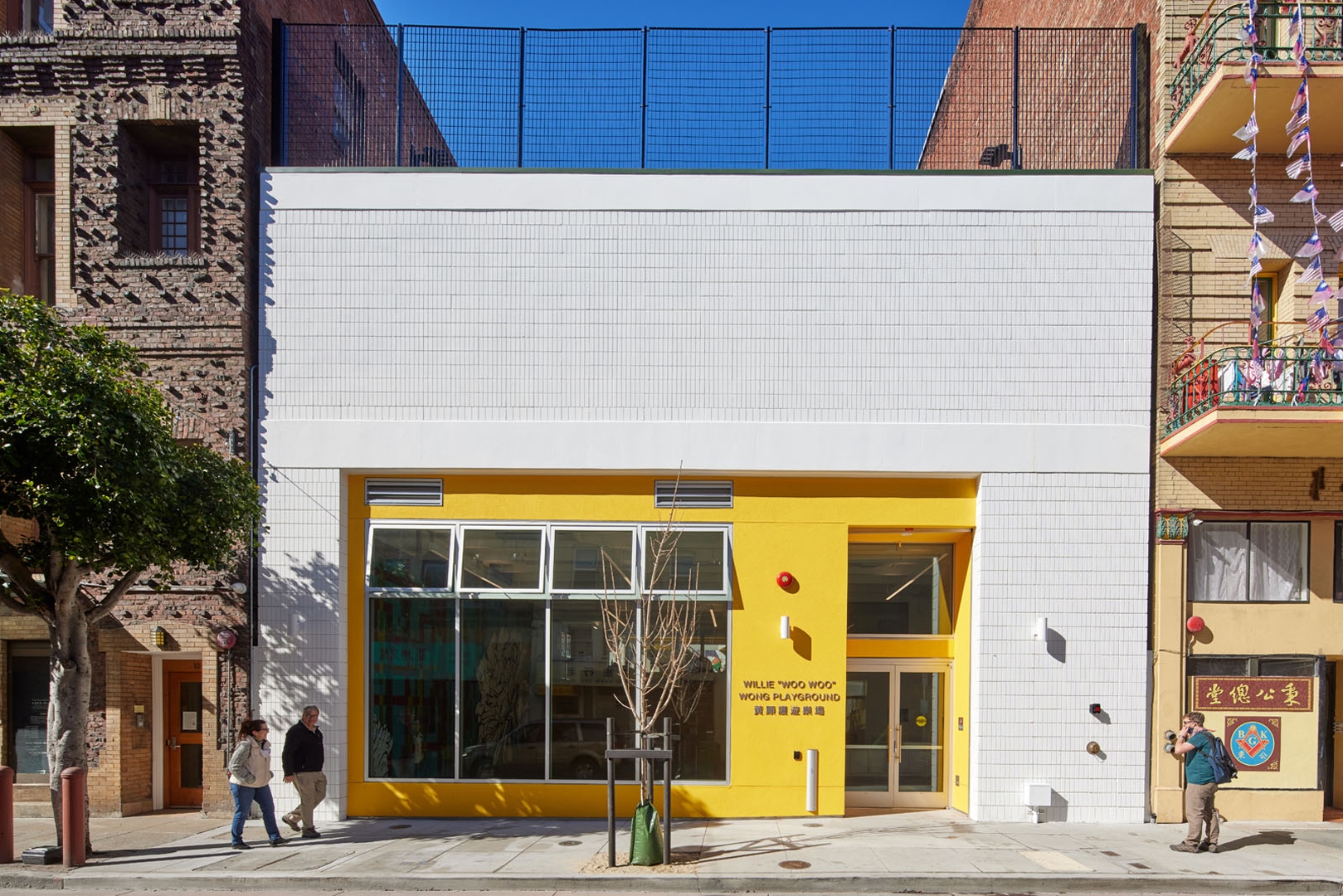
Willie “Woo Woo” Wong Playground, designed by CMG Landscape Architecture and Jensen Architects for the city’s Recreation and Parks Department, has been an important public space in tightly packed Chinatown for nearly a century. Before, the half-acre park was a bit of a jumble. Situated in the middle of a block, it had street access on one side, a connecting alleyway on another, and dark, cinderblock clubhouse on a third. There were play areas for younger children on one half of the park near the clubhouse and tennis and ball courts on the other side for older kids and adults, but none were easily accessed by the others. And because of the site’s hilly topography, the park’s flat areas had to be cut into the earth, leaving large retaining walls, some 15 feet tall, that divided the space.
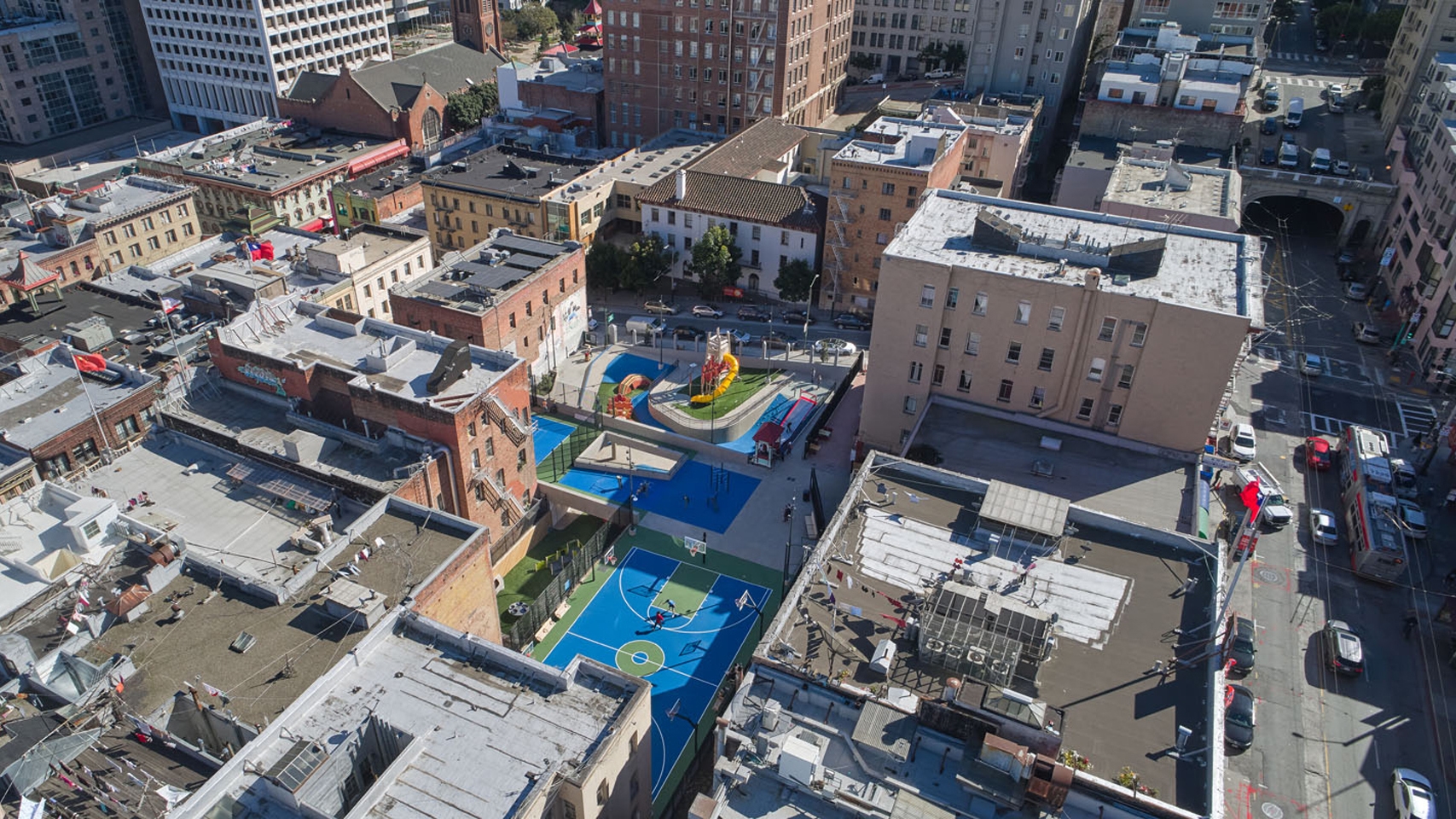
Often cited as the densest neighborhood west of Manhattan, San Francisco’s Chinatown has long been bereft of outdoor space. The 30-block area is home to more than 18,000 people, including an estimated 500 low-income families living in the cramped quarters of single-room occupancy (SRO) hotels. Recreation space is often tucked inside buildings like indoor basketball courts run by the city and a YMCA gym. Willie “Woo Woo” Wong Playground is one of just two parks with outdoor space for the neighborhood, and the only one specifically designed to accommodate the neighborhood’s intergenerational population and families jammed into SROs.
The new design unites the park’s disparate zones, with a bold overpass-style bridge serving as a connector and new heart of the space. Below there’s a play area for toddlers that doubles as a day care site and playground, and above are ball courts and game spaces for children and adults and an exercise area for older people. Using roof spaces as park surfaces, the entire area becomes a multi-level indoor–outdoor community center. “We’re reconnecting all these spaces that were really disconnected before,” says Willett Moss, a partner at CMG Landscape Architecture, the lead consultant on the project.
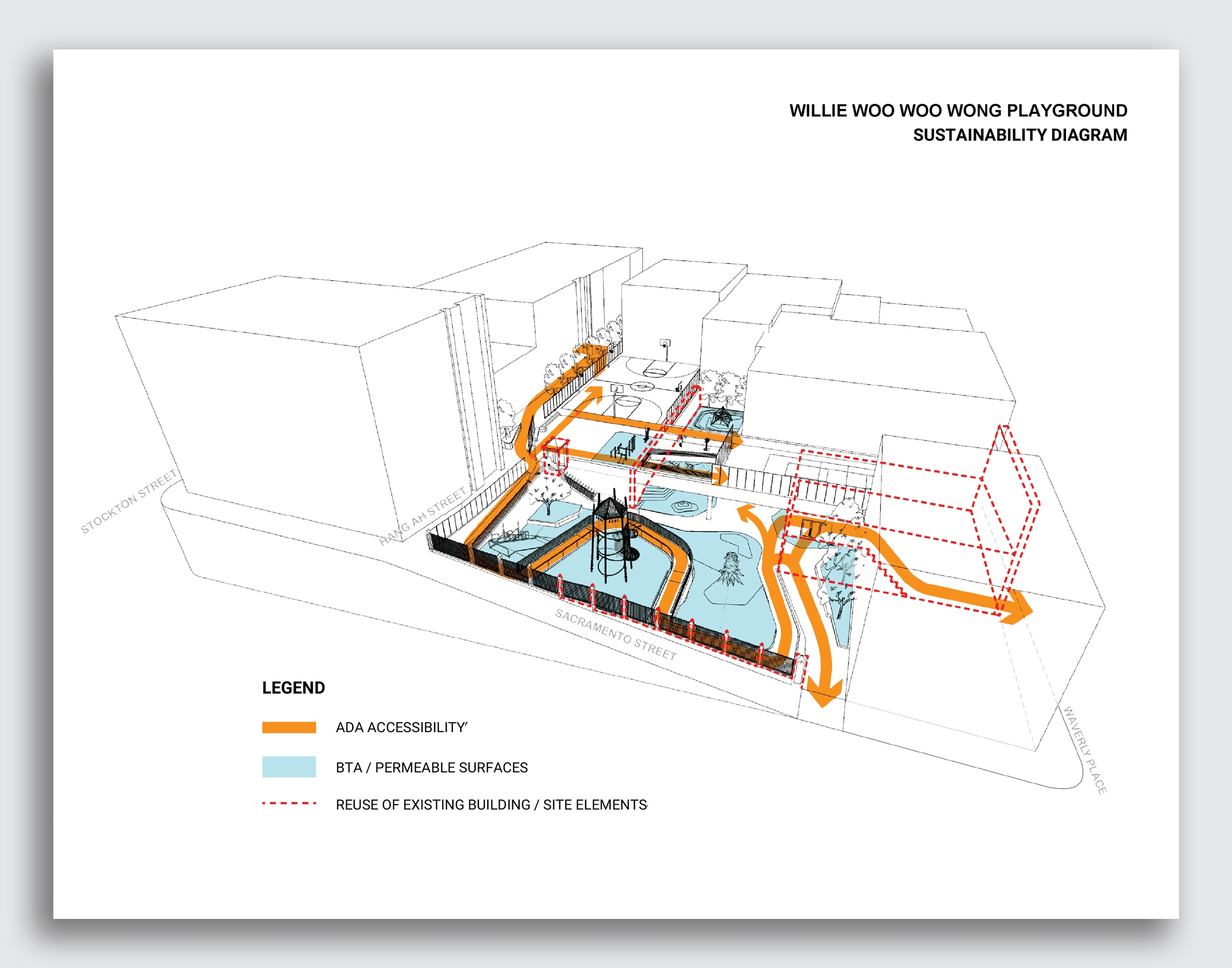
Rethinking the park’s site also required balancing many different users, particularly the older generations who have used this space for decades. Moss says the design focused on creating an area where the community’s seniors could gather and be active. Located at the center of the park, this exercise area offers a kind of perch for seniors to look out on the play areas around and below them—a park version of Jane Jacobs’s call for more eyes on the street to improve the sense of safety and community. “It’s like the panopticon of old people,” Moss says. “It’s providing for the seniors in a way that they use the space.”
For an intergenerational park, it’s also a way to create sectors within the park that have clear uses, so roughhousing teens can be on the rooftop basketball court instead of bumping into somebody’s grandma on an exercise machine. “We utilized the topography to make those distinctions,” Moss says. The multi-level park still retains some of its necessary retaining walls, but a winding ramp and an elevator allow universal accessibility. The retaining walls that remain have even become part of the park experience, with kids using them as canvasses for chalk drawings.
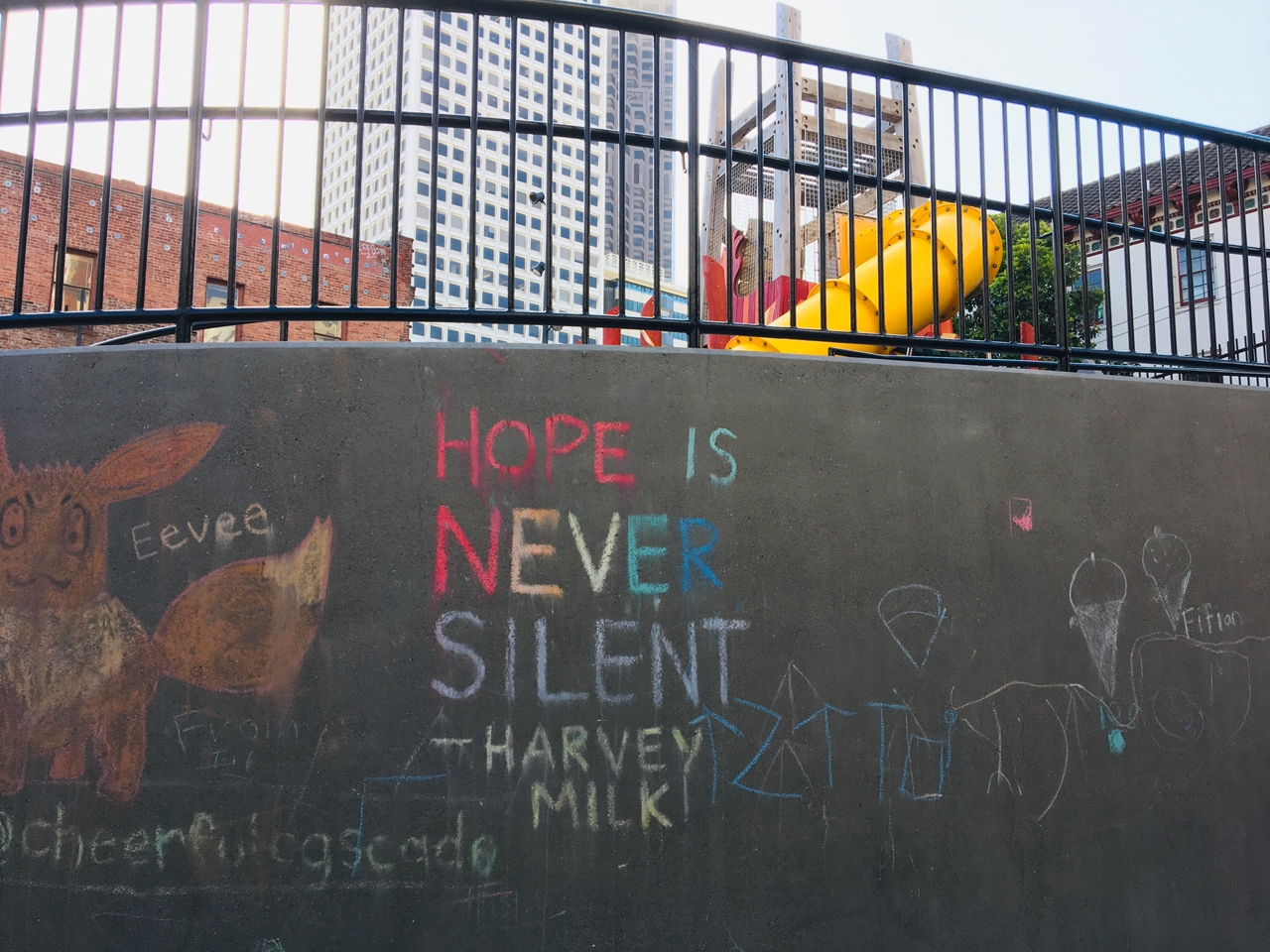
[Photo: Tan Chow/courtesy CMG + Jensen]
The redesign also focused on expanding and improving the clubhouse space, which the community and the Chinatown Community Development Center lobbied the city’s parks department to preserve as a rare gathering space for group meetings and senior social events. The designers recognized the clubhouse’s importance, but thought it could provide more, in terms of space but also in terms of connection to the park and city outside. “The ’70s era clubhouse was constructed fully of [cinderblock] walls with very little regard to windows looking out,” says architect Frank Merritt, a principal at Jensen Architects. “It was the community who really chimed in and actually recognized and reinforced the need and what they valued and said, ‘yeah, we need more in the clubhouse. It’s not just a simple remodel.’”
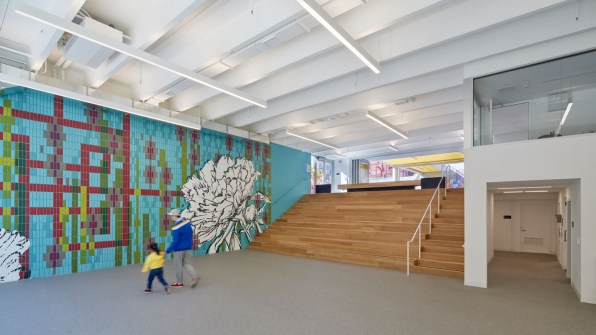
The new space had broad openings to the park area, including a sliding wall of doors that can completely open to the lower park level. A new entry to the clubhouse was created on the street, with large windows replacing the cinderblock. “That opened up a full view up through the clubhouse into the playground and play area, and ended up being vastly different from the dark, bunker-like space that it was before,” Merritt says.
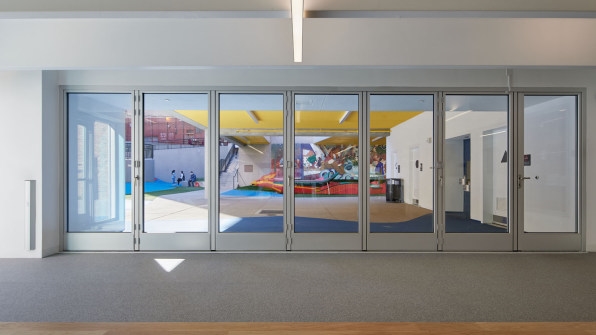
Now it’s being used for community group meetings and performances, as well as for a day care. Renovated bathrooms are a less glamorous but important part of the redesign, says Merritt, and the resulting clubhouse and park combination is already being embraced by the community since opening this summer. Malcolm Yeung, executive director of the Chinatown Community Development Center, says that the park has become a popular gathering place for the neighborhood’s residents, especially the low-income families living in the area’s SRO hotels. “We see them using that space on a regular basis, particularly the playground,” he says. “It’s already accomplishing what it needs to.”
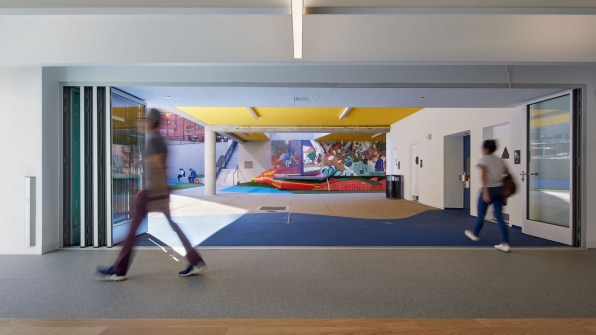
Despite its cramped conditions and varied goals, the park renovation manages to create something for all its potential users. For the designers, these challenges only sharpened the focus on what the space needed to be. “It was definitely a blessing to have so many constraints,” Moss says. “It really gets you to cut to the chase.”
![]()
![]()
![]()
![]()
![]()
![]()
![]()
![]()
![]()
![]()
Fast Company , Read Full Story
(21)